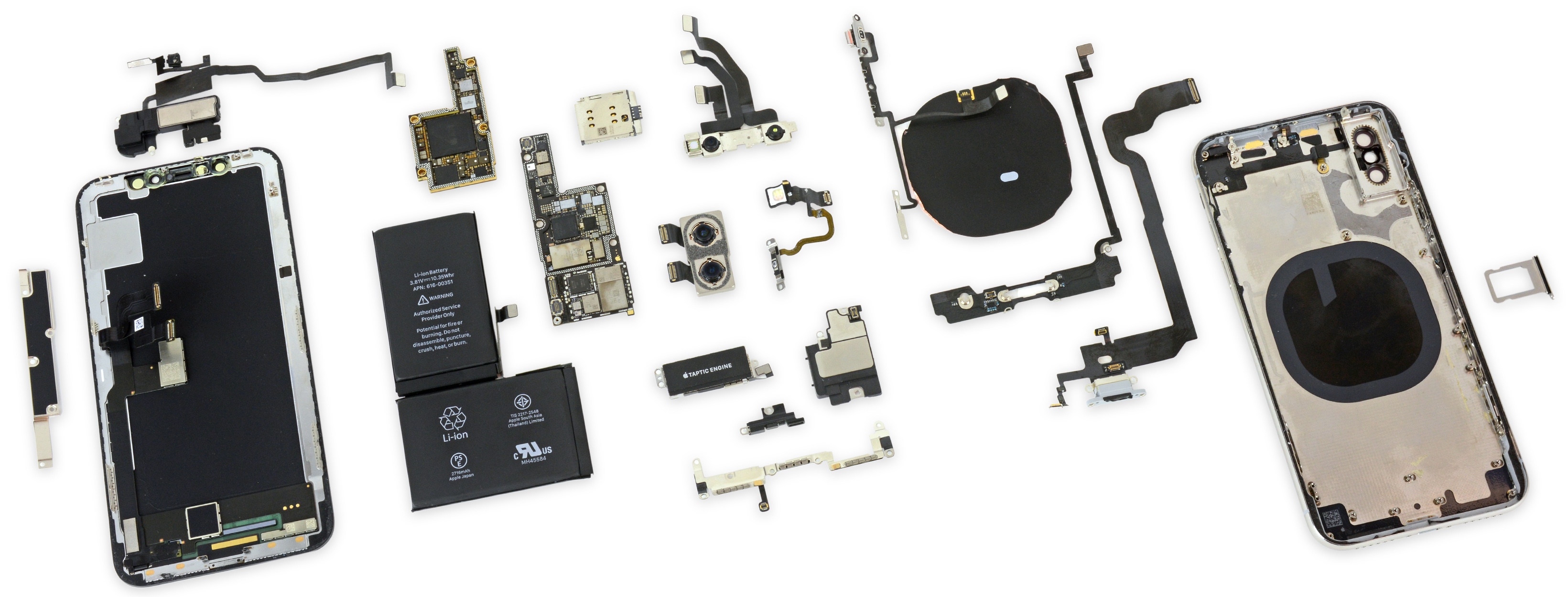
iPhone X went on sale around the world today and iFixit this morning published their teardown analysis of the handset, revealing the internal design radically different from prior models.
The phone opens from the side, just like iPhone 7 and iPhone 8 do.
From the inside, iPhone X is the most densely-packed gadget iFixit has ever taken apart thanks to “an unprecedented degree of miniaturization” of the main board. The logic board is even more densely packed than any of the logic boards in Apple Watch models.
To free up valuable real estate for a Plus-sized battery and Face ID hardware, Apple has effectively folded the logic board in half and soldered the layers together. The downside of this design is that board-level repair will be extremely difficult, and near impossible in some cases.
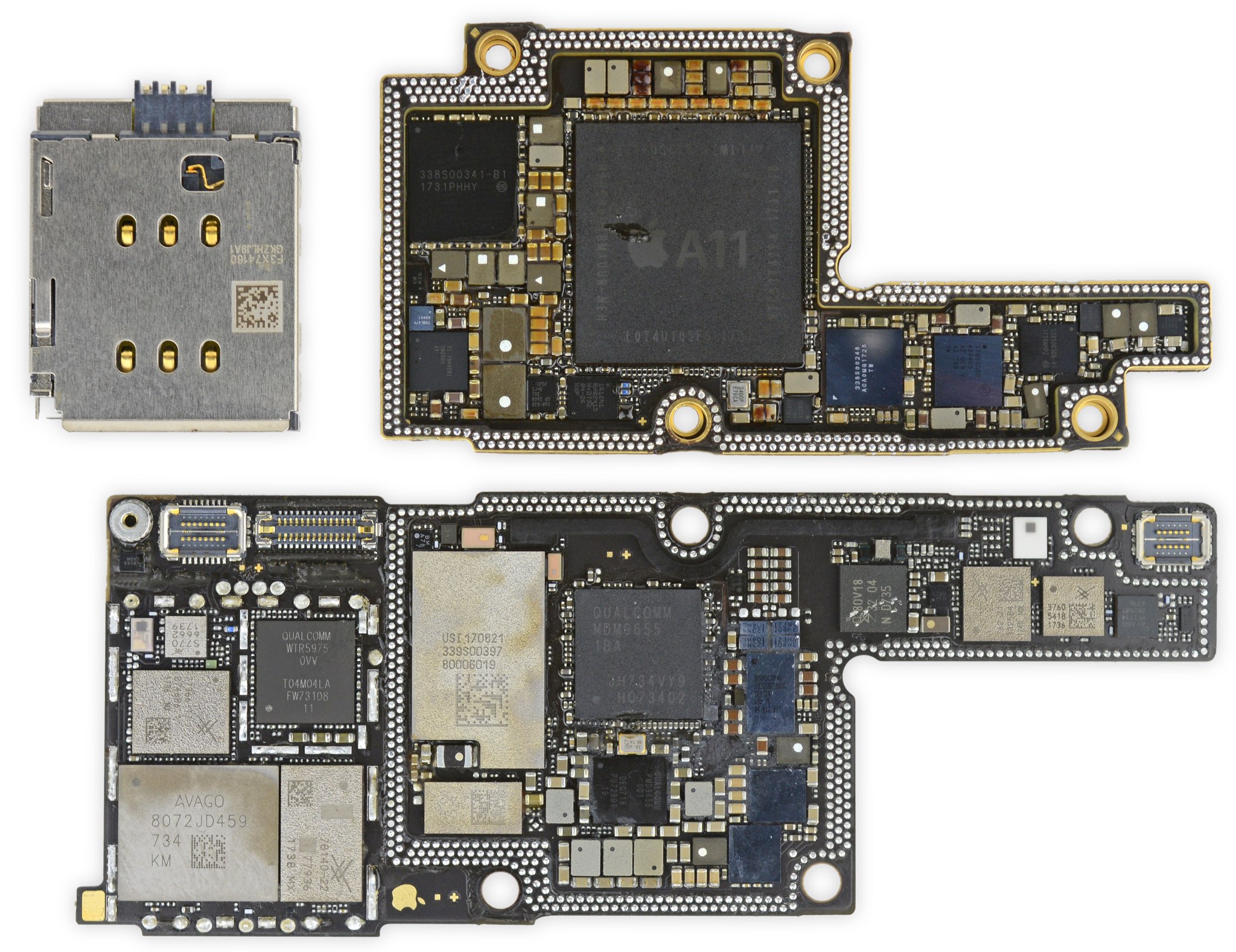
“The closest thing we’ve seen to the iPhone X’s stacked logic board is the one we found tearing down the original iPhone,” notes iFixit. When folded, it takes up about 70 percent of the area of the iPhone 8 Plus logic board.
Separated and spread out, it’s actually 55 percent bigger than the one in iPhone 8 Plus.
The following chips have been identified on the logic board:
- Apple APL1W72 A11 Bionic SoC layered over SK Hynix H9HKNNNDBMAUUR 3 GB LPDDR4x RAM
- Apple 338S00341-B1
- TI 78AVZ81
- NXP 1612A1—Likely an iteration of the 1610 tristar IC
- Apple 338S00248 audio codec
- STB600B0
- Apple 338S00306 power management IC
- Apple USI 170821 339S00397 WiFi / Bluetooth module
- Qualcomm WTR5975 gigabit LTE transceiver
- Qualcomm MDM9655 Snapdragon X16 LTE modem and PMD9655 PMIC
- Skyworks 78140-22 power amplifier, SKY77366-17 power amplifier, S770 6662, 3760 5418 1736
- Broadcom BCM15951 touch controller
- NXP 80V18 PN80V NFC controller module
- Broadcom AFEM-8072, MMMB power amplifier module
- Toshiba TSB3234X68354TWNA1 64 GB flash memory
- Apple/Cirrus Logic 338S00296 audio amplifier
It’s one very densely packed board.
“The iPhone X logic board is the first double-stacked board we’ve seen in an iPhone since the very first iPhone,” said iFixit.
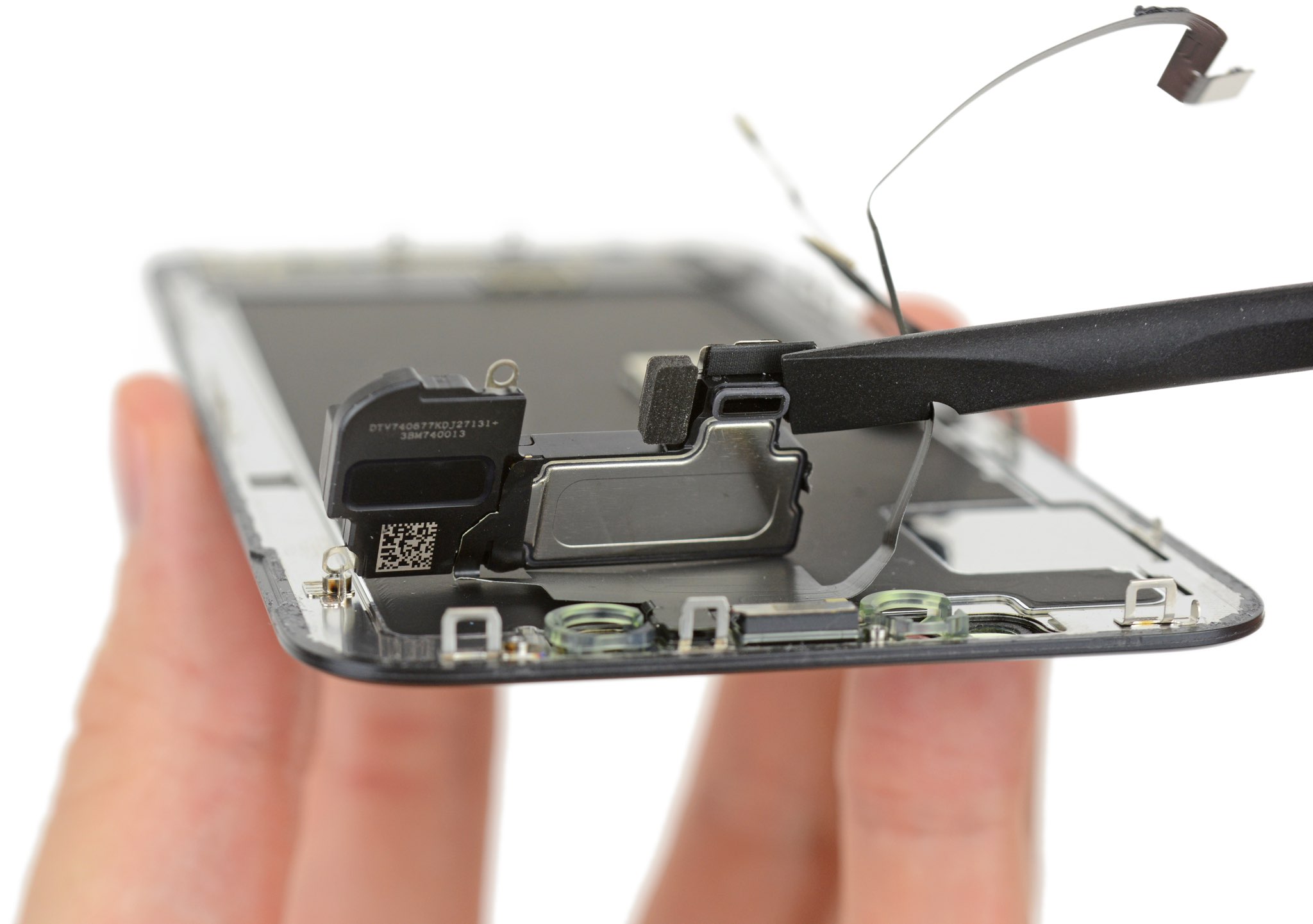
To make room for the extra front-facing sensors, the earpiece speaker has been moved down a bit and redesigned with a cool duct to channel sound out of the display assembly.
A first in an iPhone, Apple packed in a two-cell battery that allowed it “to get creative” with the shapes and placement in a space-constrained phone. The 10.35 Wh battery (2716 mAh at 3.81 V) is on par with iPhone 8 Plus, but falls short of Galaxy Note 8’s 12.71 Wh cell.

The most complex upper display component collection iFixit has seen yet houses a loudspeaker, microphone, ambient light sensor, flood illuminator and proximity sensor.
The dual-camera on the back, additionally secured to the rear case with foam adhesive, comes with a beefy bracket that “looks like it might also offer some bendgate-proofing support.”
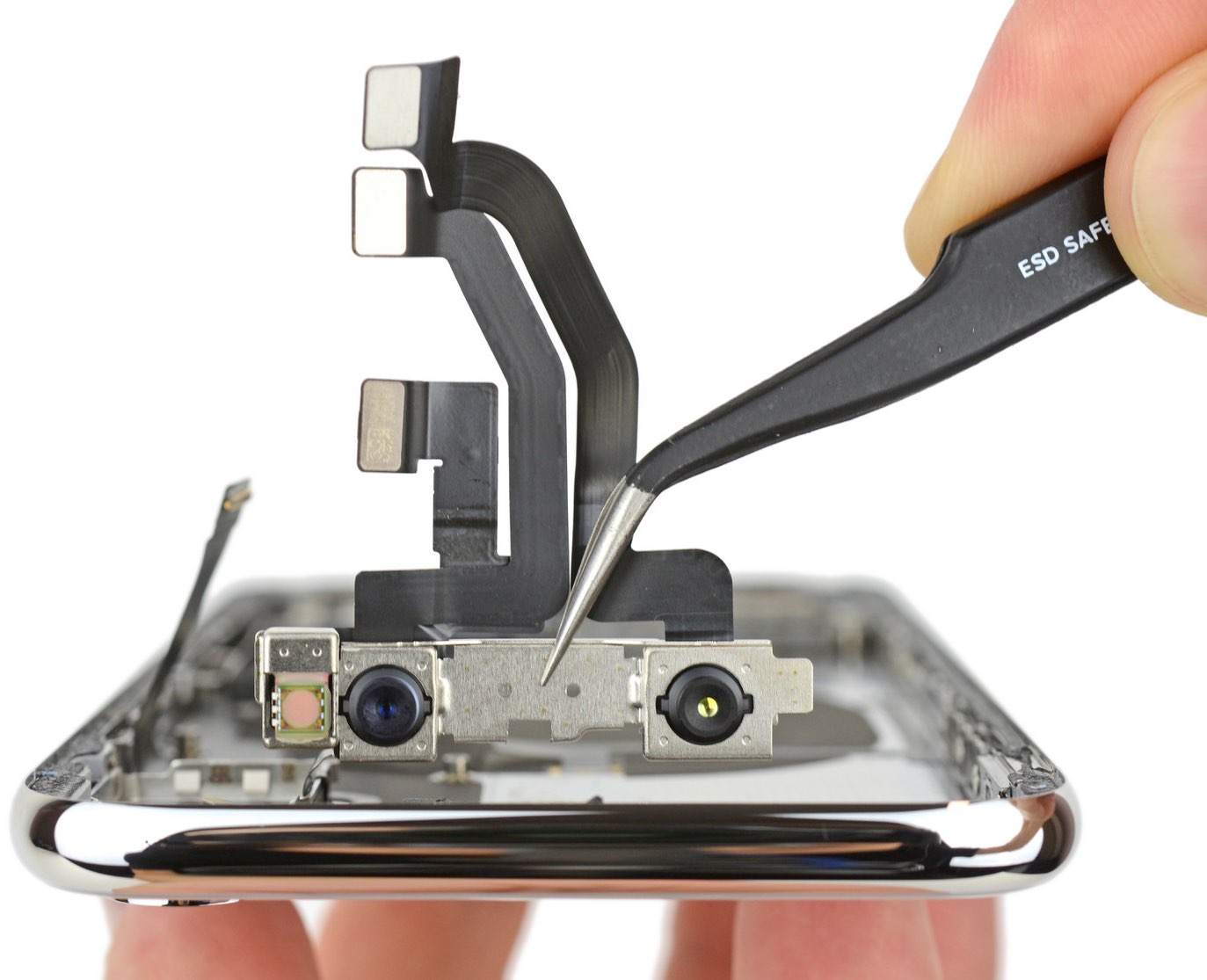
Left to right: dot projector, front-facing camera and infrared camera.
The phone’s OLED panel measures 5.8 inches diagonally and has a resolution of 2,436-by-1,125 pixels (458 ppi). “With Apple’s embrace of the OLED display, repair costs for this luxury phone are likely to start high and stay there for a while,” notes iFixit.
Indeed—according to Apple itself, iPhone X screen repairs are priced at $249 while any other out-of-warranty damage will yield a $549 repair fee.

In other words, don’t drop your iPhone X no matter what.
The phone’s Taptic Engine and barometric vent are found at the bottom—the Taptic Engine continues to be a linear oscillator vibration motor like on prior models—while the Lightning connector is reinforced a bit with a wider bracket that screws into the sidewall of the frame.
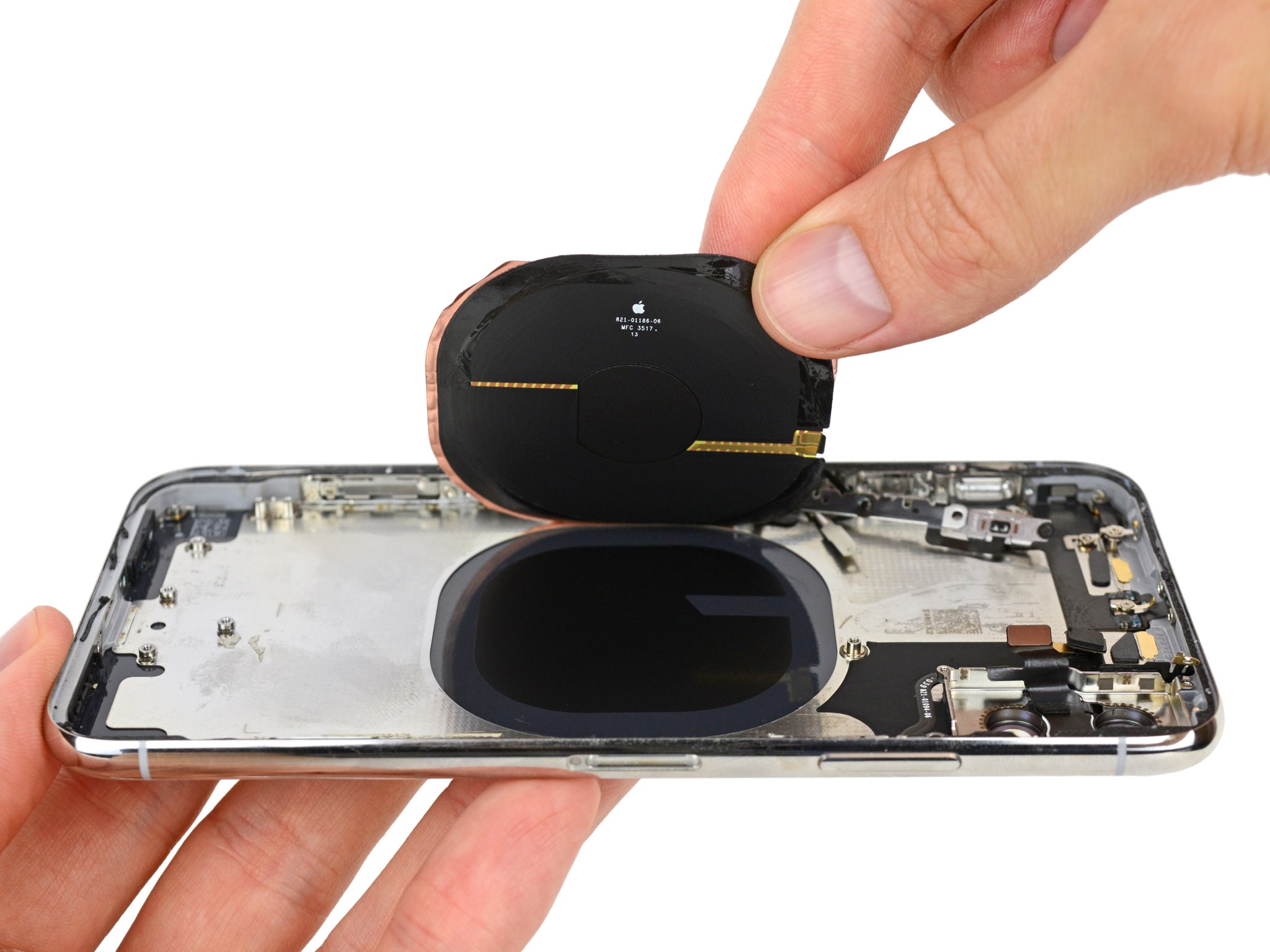
iPhone X’s Qi-based inductive wireless charging coil
Unsightly regular markings have been removed from the back of iPhone X, including the e-waste symbol, just like we saw on the iPhone 8 series. This is now possible thanks to the E-LABEL Act, which permits phone vendors to display those labels on the screen instead.
iFixit gave iPhone X a six out of ten on its repairability scale.
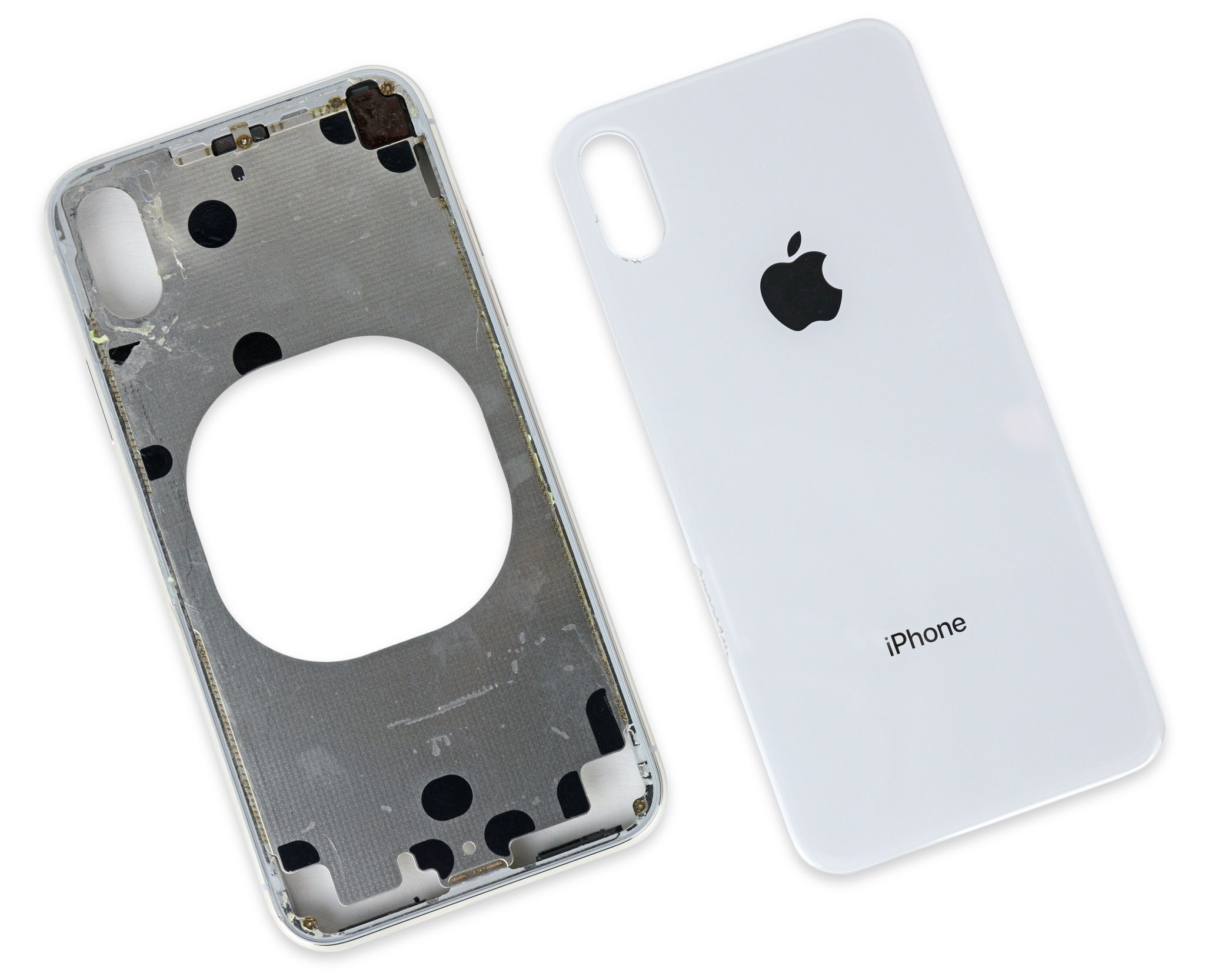
“Like iPhone 8, iPhone X makes battery and display replacements a priority—but it loses points for its lack of modularity and back glass replacement procedure,” they summed it up.
What are your biggest takeaways from the iPhone X teardown?
Let us know in the comments section.